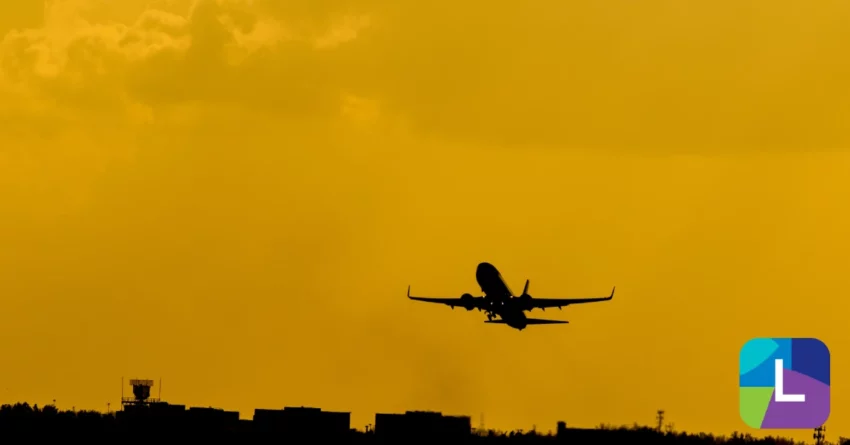Becoming A Professional Pilot – How To Fund The Training?
A professional pilot career can be an exciting and rewarding path to take, but with limited training options, how do most fund it?
Passenger travel has grown in the past 20 years from one billion passengers a year to more than four billion. Before the pandemic, there was already a very real shortage of pilots.
With airlines springing back into life, anyone interested in becoming a pilot now has a fantastic opportunity to do so [1]. So how do you go about becoming a commercial pilot? And what are the funding implications?
Common training routes
The most common training route in Europe for student pilots to gain experience by flying bigger and more complex aircraft. They work their way up through the licences, building hours until finally flying a large commercial jet carrying passengers.
Also known as the ‘self-improver’ route but is now known as the modular route. There are many schools around the UK and Europe which offer this type of training. Most pilots flying today have been through this route.
Previously in the 1960s, the largest UK airlines (BOAC – who became BA, BMI and similar) worked with leading flight training schools to develop a full-time course where the student would commence training knowing absolutely nothing.
Known as ab initio courses, trainee pilots would go through 14-18 months of intense training coming out the other end fully qualified – as what its called in the trade as a ‘low hours’ pilot.
In the past, 99% of the students who went through these courses were sponsored by the airlines themselves. Upon completion, they would go straight into a type rating course – a course which trains you to fly specific aircraft.
These ab initio courses created in the ’60s are still around today and are referred to as ‘integrated’ courses or sometimes just ‘full-time’ courses. The big difference now is that the airlines no longer sponsor the students.
There has long been a debate about which route is best – full-time or modular. The best advice is to carefully research the various schools and options and visit them if possible.
A lot of the bigger academies conduct training abroad in countries such as the USA, South Africa and New Zealand, where it is cheaper to run, and the weather is more reliable. Try to talk directly to students who have been through the course and then make your own mind up.
Pre-Pilot Training Requirements
It’s also worth pointing out that most training schools require you to take an assessment before enrolling. This is to ensure you have the aptitude and all-around strong character to get through the course.
In terms of qualifications, you won’t require a university degree, good GCSEs or equivalent will suffice. What’s more important is a strong command of English, as this is the language spoken over the airwaves. You also need to understand basic maths and physics as this will form part of the theory during ground school.
The big question once you’ve decided what route to take, is funding. Airline sponsorship has long gone now, so how do you pay for your pilot education?
How to fund your training
The nearest sponsorship you will get today is a guaranteed interview with an airline – and this is only provided you tick all their boxes and perform to their standards during training. 99% of students who train to become airline pilots are self-funded.
Students rarely provide all their funding independently, although there are mature students looking for a career change who may have funds available. Most gain funding through their family who raise the money via savings.
Loans for training are few and far between as most training courses do not guarantee a job. Therefore, its seen as ‘too risky’ by traditional lenders. Those loans that do exist usually require property in the UK as a form of collateral.
Unsecured loans are even rarer and a real jewel if you can find one. This is where Lendwise comes in as an option and we are very proud to be working with them to finance the training of our cadets.
Applicants will receive a fixed, personalised loan rate with flexible repayment terms. There is no early repayment charge meaning borrowers can pay off their loan in full before the agreed term. Plus, assuming the cadet is in full-time training, loan repayments only begin once the training has ended.
For those budding pilots who do not have access to the property to offer as collateral, an unsecured loan of his nature can most certainly mean the difference between achieving their dream or not.
By Martin White, 2Fly Aero Group
Martin has been in the pilot training industry for 25 years as a theoretical knowledge courseware designer and more recently in marketing. He is currently a consultant with the 2Fly Aero Group which is a global group of aviation companies headquartered in Florida with divisions all around the world. It specialises in training airline pilots for both the EASA and FAA licenses. Its flagship EASA ATPL course, is the full-time Pro-Pilot Airline Programme, designed to take you from the beginning (ab initio) through to fully qualified in around 16 months. For more information about the programme visit www.2flypropilot.com
[1]Note that this article refers to flying UK or European-registered aircraft under European flight crew licensing overseen by the European Aviation Safety Agency (EASA). Flying American-registered aircraft comes under different licensing rules controlled by the Federal Aviation Agency (FAA). Those interested in flying for British Airways or Ryanair require EASA training.
